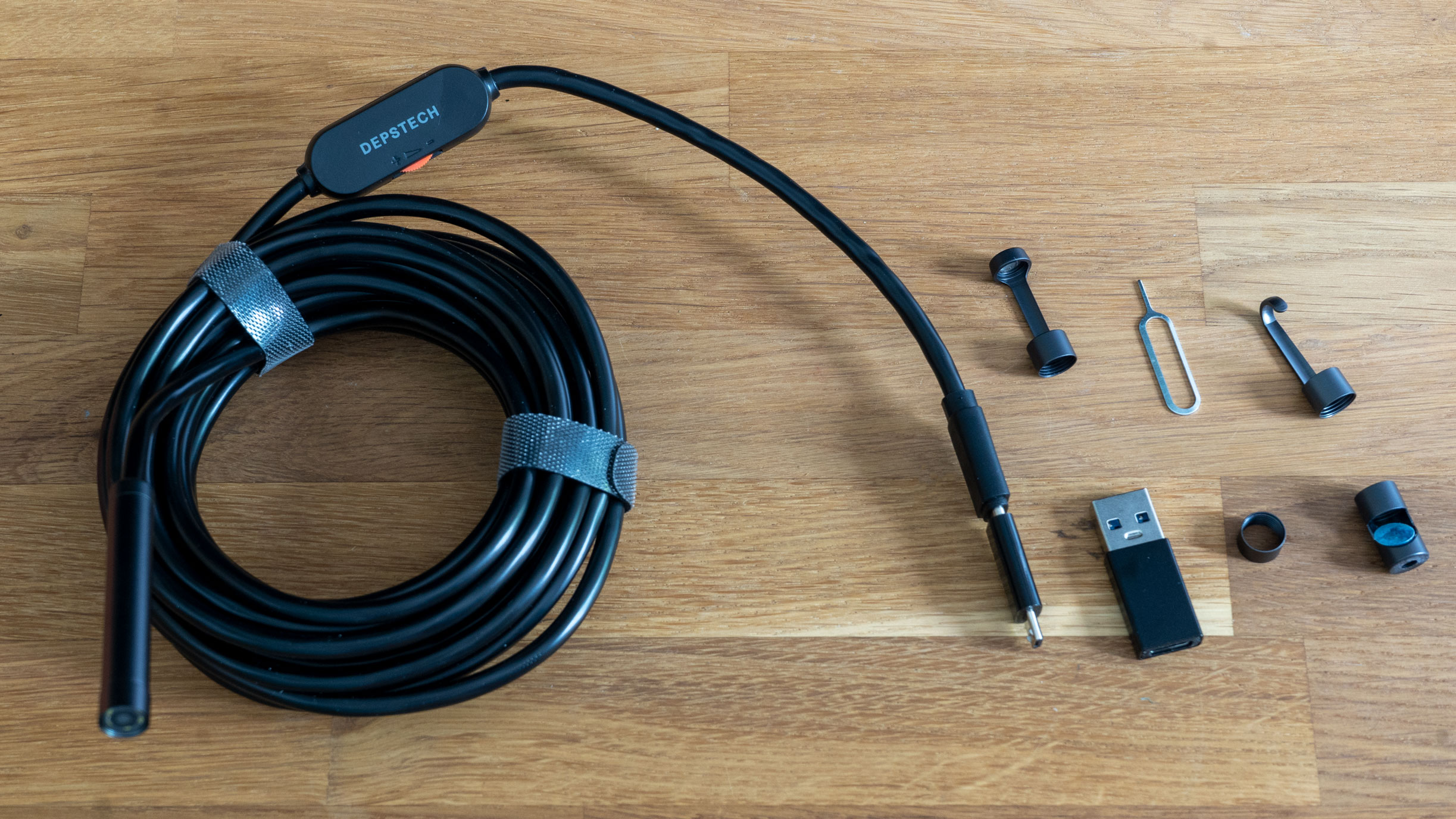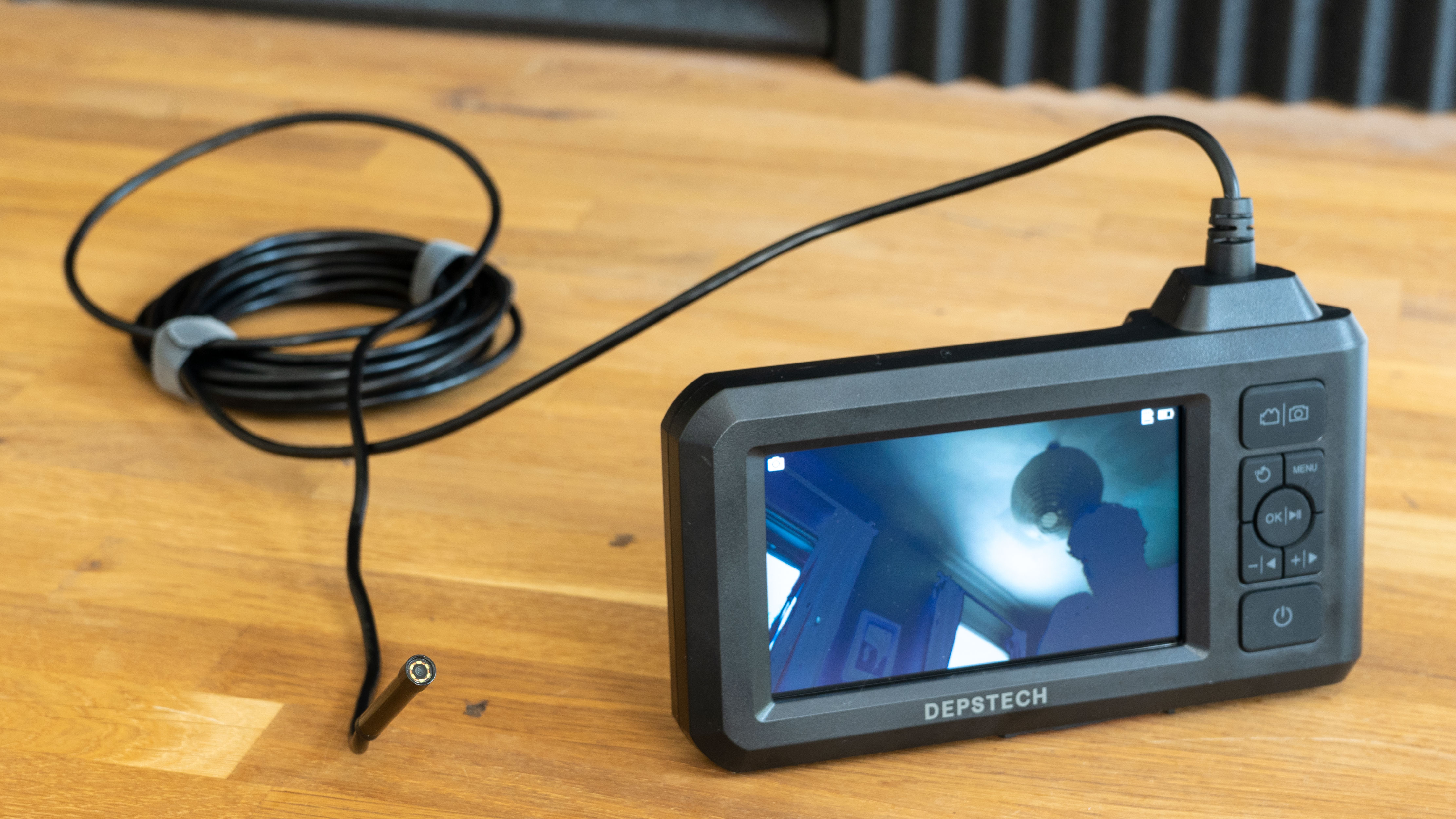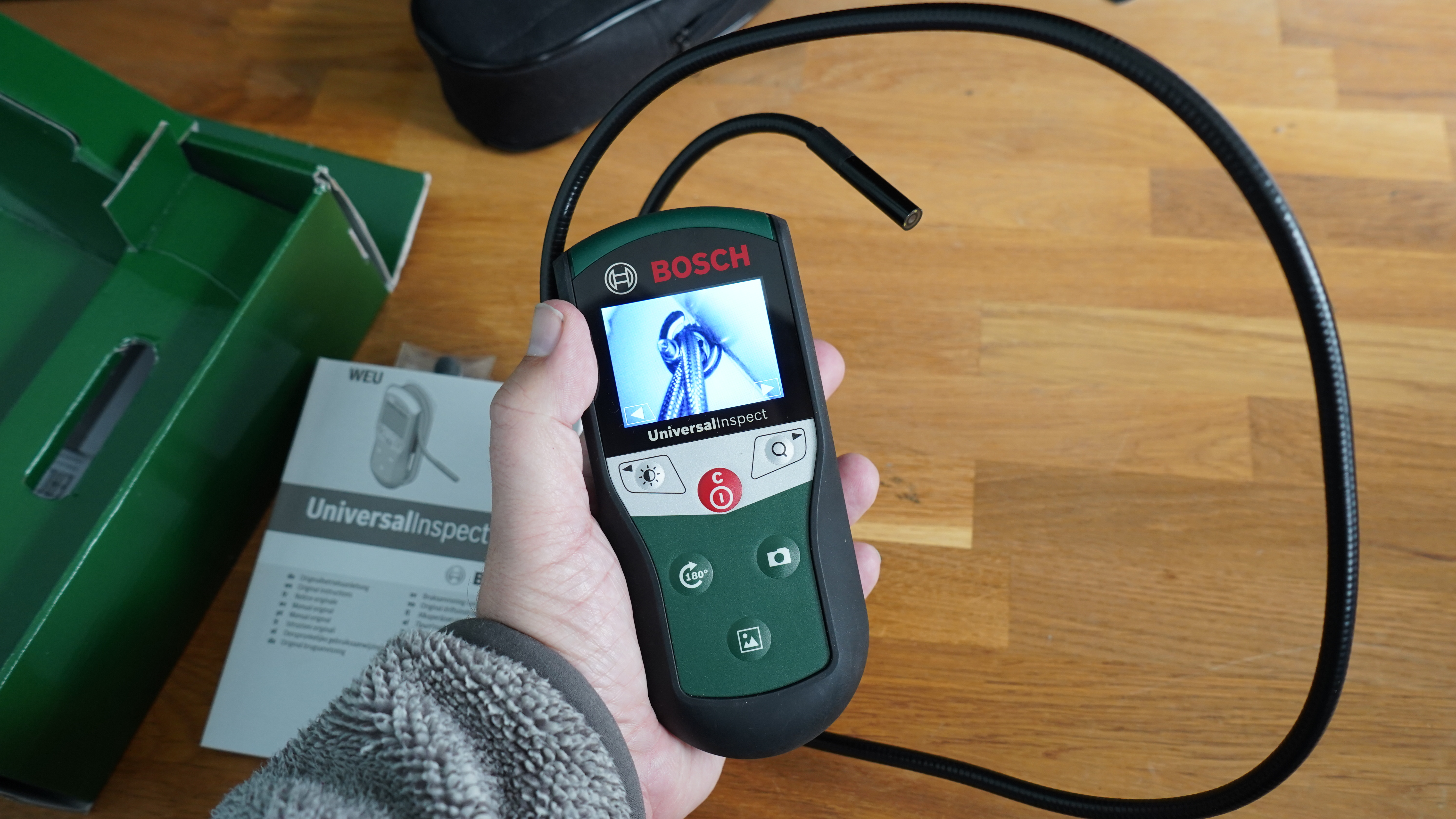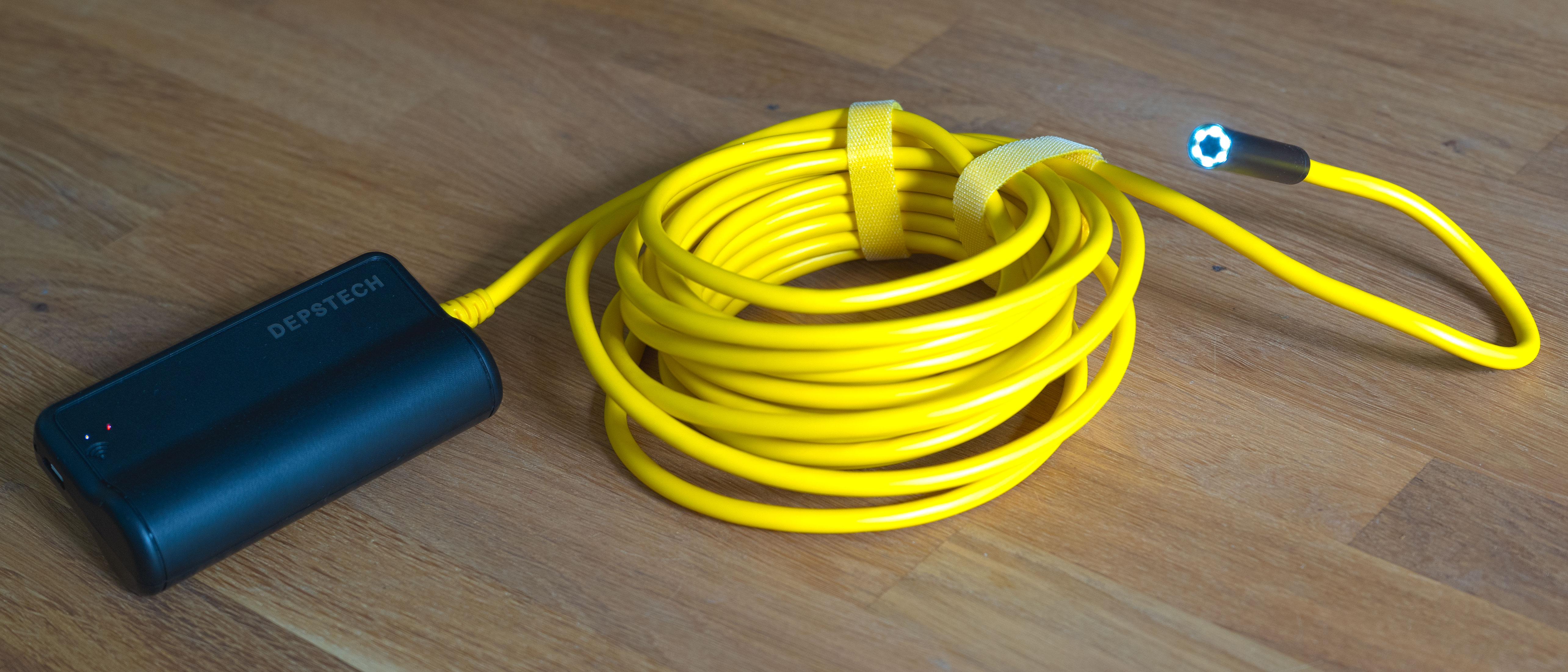Best borescopes and endoscope inspection cameras: see the things you can't reach!
The best borescopes can reach into engine bays, pipes, cavities, and other hard-to-reach places – sometimes known as endoscope inspection cameras

Borescopes – or inspection cameras – have become must-have accessories for tradesmen and DIYers to inspect drains, pipes, and wiring without removing walls and ceilings. They are also brilliant tools for mechanics and car enthusiasts, as they'll give a clear view of the hard-to-reach engine or suspension parts without hours of dismantling. I use them at home all the time.
Some people call them 'endoscopic cameras' or 'endoscopes' but that was originally more of a medical term, and you – and I – might be a bit too squeamish for that!
There is a lot of flexibility (often literally), and the choices have become increasingly bewildering – but also at a wide range of prices. That's why we've put together this guide to the best borescopes on the market right now.
Whether you're tracing an oil leak, unblocking a drain, or checking wall cavities, the applications for this tiny camera are nearly limitless. (In other words, this is broadly the same concept as a medical endoscope, extended to everyday industrial and repair work.)
Borescopes and inspection cameras can come in many forms. Some have a rigid arm with a fixed camera, a flexible arm, a soft bendy wire-like extension, or a mixture.
Borescope accessories can extend the possibilities still further. Tiny mirrors can re-direct the view sideways, for example, while hooks and magnets can help retrieve lost items from hard-to-reach places. We explain what we look for in a borescope at the end, but keep in mind that they are designed for a wide range of jobs and everyone's needs are different. Let's check out the best borescopes.
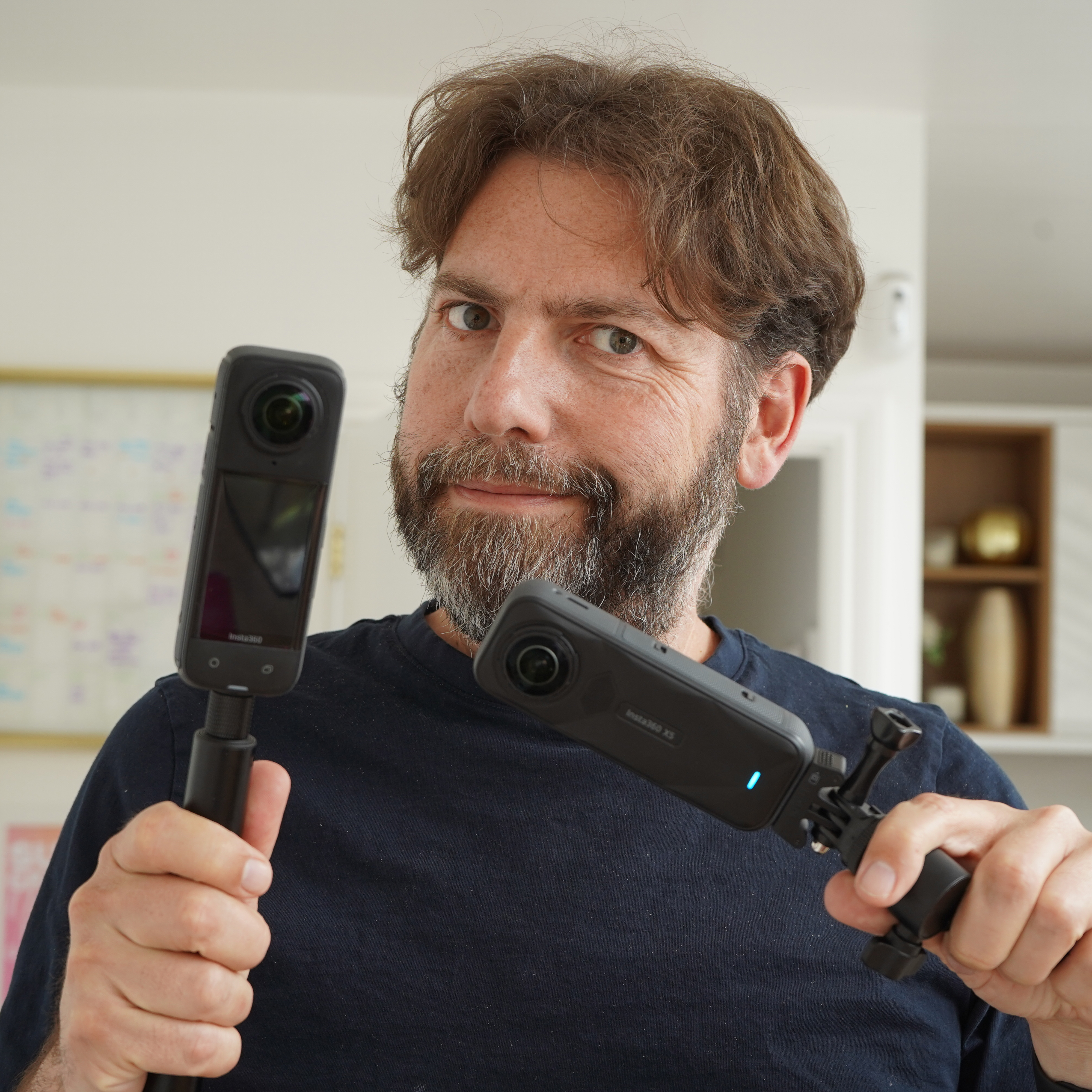
With over 20 years of expertise as a tech journalist and bestselling author, Adam brings a wealth of knowledge across a vast number of product categories, from home security cameras, NVR cameras, webcams, radar and drones. He's cautious about describing himself as a DIY enthusiast (isn't it better if jobs just magically get done?), but he's certainly does a lot of it!
Top Picks

A rugged inspection camera with decent-quality video, a workshop-friendly build, and a sensible price.
Read more below
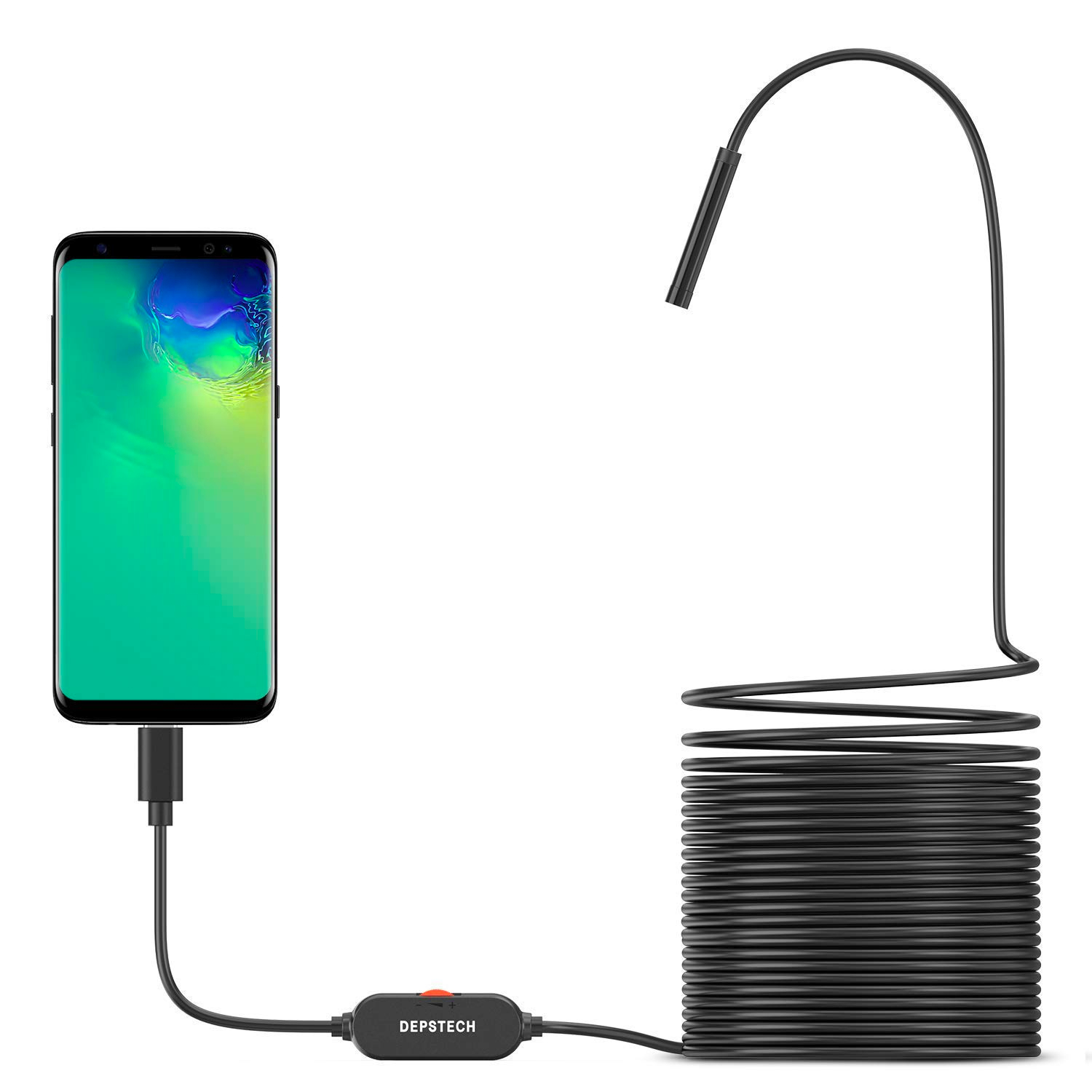
This super-cheap USB attachment is all you need for Android phones or any computers.
Read more below

The Depstech DS300 has a lot of functionality and easy portability, for a surprisingly low price. The recorded images and video quality.
Read more below
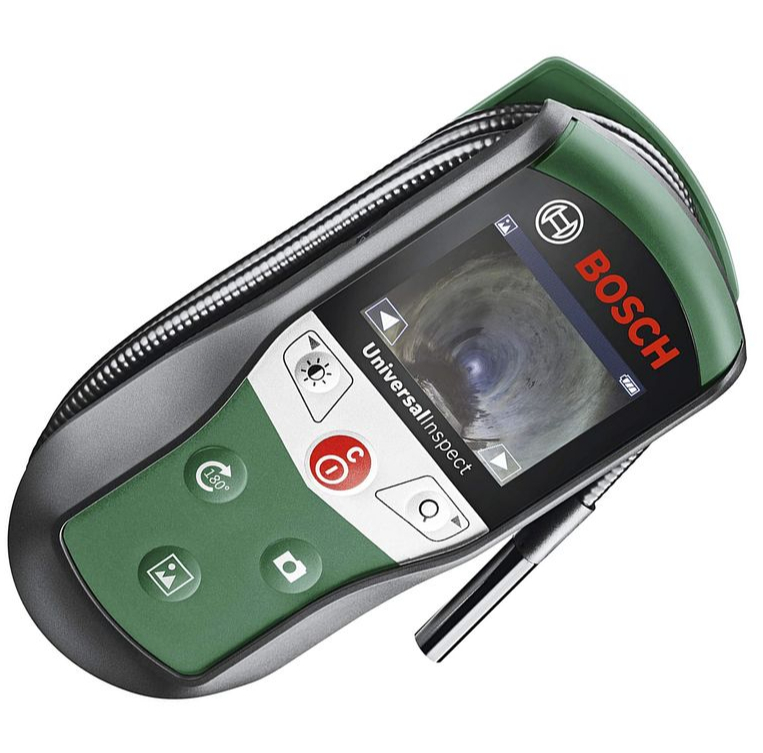
The Bosch Universal Inspect is a simple design, but that makes it relatively rugged and easy to throw into the toolbag with the others.
Read more below
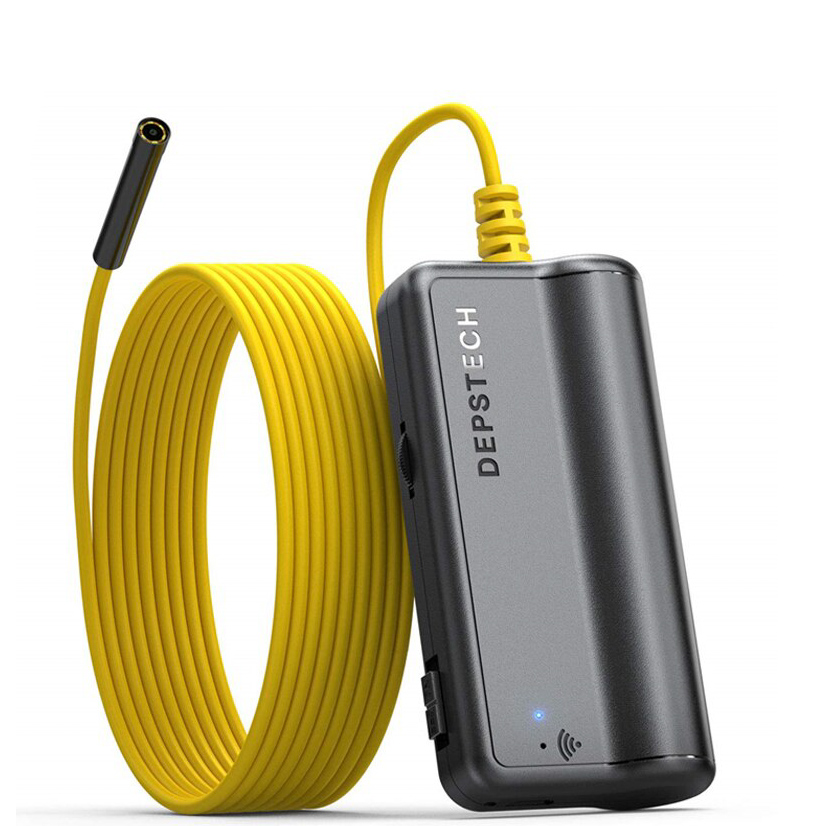
This is another borescope that connects your phone, so you can use its screen, but uses wifi rather than a physical connection – so can work on Apple and Android devices.
Read more below
Best borescopes and inspection cameras in 2025
Why you can trust Digital Camera World
Best overall
Specifications
Reasons to buy
Reasons to avoid
✅ You want an all-in-one device: A built-in screen means you're not dependant on a phone
✅ You want a solid grip: The pistol grip is easy to hold in a workshop
❌ You need it compact: It comes with a travel case, but it still takes up a bit of space
The Depstech DS500 includes a dual camera design, which not only features a forward-pointing camera but a second looking out to one side (yet it manages this with a narrower probe than the wireless WF028 further down this guide).
It is more expensive than is strictly necessary for occasional tasks, but it also takes inspection in its stride in a way other solutions just don’t. The solidly built handset, not to mention the all-important probe’s dual-lens camera, are all backed up with the ability to record meaning you’ll not need to replace this tool for a long while. As a bonus the accessories are great. When I tried it I found the built-in torch was genuinely useful (and perhaps I'm a big kid but I loved the super-cool trigger switch).
If you dropped it, I'm pretty confident that the device would survive a fall too – the screen has an all-round lip which will provide protection and the plastic feels rugged. If it fell straight on the screen, though, there isn't much to protect that.
The DS500 is a fine tool, capable of performing its duties even in a rough and tumble environment. The build is confidence-inspiring, always appreciated in the kind of environment where serious work is being done, and we really appreciated the case and addition of a magnet as well as a standard hook – you’ll never lose a screw again.
Read our full Depstech DS500 review for more details
Best budget DIY option
Specifications
Reasons to buy
Reasons to avoid
✅ You want economy: Pluging into your phone is cheap
✅ You like to share: It's also easy to get pictures from your phone
❌ You have an older iPhone: This is a USB-C camera
The Depstech 86T-5M is an excellent value-for-money endoscope that – as long you’re not hoping to connect to an older iPhone – provides a solution more than adequate for occasional DIY needs, or retrieving lost items from tricky spots. I liked the simple lighting control (the thumb wheel on the lump in the cable) and was impressed with the usefulness of the adapters.
If I was being picky, I'd say I found the magnet tricky to use – but ferrous metals need some volume; it’s hard to blame physics. There is enough magnetic strength to lift a small piece of metal, so you might be able to move a small screw or paperclip, which is all I could reasonably expect.
Remembering this costs little more than a good delivery pizza, it is impressive. You can also add the fun of creative uses through the operating system's webcam connection, which might make it seem like a bargain. Bear in mind that this device wouldn’t befriend Apple phones when I tested it, though that is down in large part to the fruity firm’s resistance to the otherwise all-conquering USB-C connector at that point (which was pre-iPhone 15).
Read our full Depstech 86T-5M review for more details
Best general purpose borescope
3. Depstech DS300
Our expert review:
Specifications
Reasons to buy
Reasons to avoid
✅ You want an all-in-one: You get a screen attached.
✅ You want to record: The ability to save video to a memory card is useful
❌ You want fast sharing: Copying files over from the TF card isn't instant
❌ You need a very rugged device: It'll stand up to a few knocks, but the cable connection is a bit vulnerable
The Depstech DS300 has a lot of functionality and easy portability, for a surprisingly low price. The recorded images and video quality, especially frame rate, could be better, but the live display is good quality and operates well whatever the light.
When I tested it, I was mostly looking at the quality, and for me it felt like good value. The screen certainly isn't the sharpness you'd expect with a premium phone, but you rarely need that kind of resolution and it's very useful not needing to risk your phone as with some lower-cost options. My only real thought is that – for most of the kind of DIY I do – whether the cable with the probe in is, perhaps, a bit too long.
Obviously you don't need to unravel it all, but you still need to store it. The trick, I found, is to take out what you need, re-velcro the rest and use it as a kind of handle or grip.
The accessories are useful, and the handset is easy to hold. While there are more expensive, bigger, and very rugged devices available (the DS500, for example), this handset and probe arrangement seems ideal for all but the most aggressively dirty environments.
Read our full Depstech DS300 review for more details
Best all-in-one inspector
Specifications
Reasons to buy
Reasons to avoid
✅ You want an all-in-one: Built-in screen and wrap-around probe holder
✅ You want changeable batteries: Swap AA batteries; no charging cables
❌ You want value: The price is high, especially given the features
❌ You need the narrowest probe: At over 8mm the probe isn't the narrowest or longest
This is a neatly-designed inspection camera, made for the DIY market by one of the best-known names in power tools. The flexible camera winds neatly around the chunky main unit when not in use, and there is a built-in color screen for convenience. The camera can store up to four images internally, but you can add to the (otherwise paltry 8-photo only) memory with a microSD card, giving up to 32GB of extra storage.
(Put a bigger card than 32GB and the system will panic though!)
There are limits. The 0.95m (3ft) cord will only be suitable for some jobs, and the 2.3-inch screen will not reveal a great amount of detail. However, you do get a magnetic head, hook, and mirror attachments in the kit. That said, this length makes it easier to control than some and it is also a bit thicker and more ruggedised so you can feel confident in its strength and in it not flexing when you don't want it to. I personally found it very useful for tasks under the sink.
In terms of age, the design has been around since 2017 so the tech isn't the most up-to-date (thoguh Bosch seems to have given the waterproofing and packaging a refresh). Moreover, how modern do you need a camera on a cable to be? You DO get a very robust-feeling housing with a clever cable wrap around which feels very easy to slam into your bag (and also comes with the kind of protective bag you'd expect from the brand).
Simple buttons are positioned well apart from each other, which the rubberized edge is grip-friendly. Holding and button pressing looks to be easier than with some of the less well-known brands, so usability has been well thought through (and I'd argue that there is much to be said – especially for most DIY fans – for the shorter probe.
Read my full Bosch UniversalInspect review for more detail
Best cheap wi-fi borescope
Specifications
Reasons to buy
Reasons to avoid
✅ You want wireless: You've got a phone with a screen; it's got wireless – why not?
✅ You want to record on your phone: Record straight on your phone using the app
❌ You find wi-fi annoying: You'll need to connect to the device
❌ Latency bothers you: Wi-fi creates a slight lag compared to a connected screen, making control trickier
The wireless approach has long been a customer favorite because it’s cheaper and more portable than buying a whole new device with a screen, plus it welcomes Android and iOS devices equally. The WF028 is an effective – and reasonably priced – example of this approach and provides all the features you realistically need. The build quality and rigmarole of connecting to the phone wouldn’t make it our choice for daily use but it is a very handy tool to have at home for occasional use.
We’d also have preferred to see a slightly narrower lens unit and a USB-C charging port in this day and age. In comparison to a device like the Depstech DS500 above, the WF028 isn't designed for heavy usage. However, this is a great choice for a quick emergency inspection, or retrieving something in a hurry.
Personally, I didn't think the latency was as much of a problem as I was worried, but also haven't seen the massive price advantage you'd hope for by providing your own screen – at least wireless keeps dirt one step removed from your precious phone though! I would have preferred it if the housing had been waterproof, and there had been more accessories, but because of the slight latency of wi-fi it is harder to use as a hook than other devices on this list.
Read our full Depstech WF028-5M review for more details
FAQs
What is the difference between a borescope and an endoscope?
A borescope is used for a wide variety of inspections, while an endoscope – while similar in concept – is for medical inspections. Borescopes can be used to inspect machinery and engines, pipes and gun barrels, and hidden areas inside the home live cavity walls. Endoscopes, by contrast, are used to inspect body cavities and organs.
What kinds of borescope are there?
The main differences are the softness of the tube. These are rigid, semi-rigid, and flexible. Rigid is good for things like gun barrels, while flexible can be directed. These are sometimes called fibrescopes (a reference to optical fibre.) Other names are inspection camera and even 'burner cam' (the camera pushed round into the hot and dangerous parts or machines).
The best borescopes: What we look for
1. Camera resolution: the more the better, though remember these cameras must be tiny to be useful. Be aware that some makers 'upsample' resolutions to make it sound better than it actually is (a common way is recording higher resolution video than the camera's sensor can make use of).
2. Screen size and resolution: the bigger and better the screen, the easier it is to get a proper view of what you're looking at.
3. Magnet tips: perfect for picking up small metallic objects that you wouldn't be able to extract any other way.
4. Mirrors: to get a sideways view in tight spaces where you can't turn the camera.
5. Hook attachments: a useful tool to extract small objects in confined spaces.
6. Battery life: the longer the better – you may be working away from a charging source for some time
7. Memory card storage: most borescopes offer fixed internal storage but some have removable SD cards – useful if you need to offer images to a client.
8. Wi-Fi: this could be handy for viewing footage on your smartphone at a safe distance from the actual dirty work
9. Number of lenses: Several different 'probes' are available from the big names, like Depstech, for the same devices – so look to see if you're getting a 'dual lens' or 'triple lens' device (they might look the same but cost differently – that will be why).
Other tool guides to check out include best thermal imaging cameras, best laser levels, and best laser measures
The best camera deals, reviews, product advice, and unmissable photography news, direct to your inbox!

With over 20 years of expertise as a tech journalist, Adam brings a wealth of knowledge across a vast number of product categories, including timelapse cameras, home security cameras, NVR cameras, photography books, webcams, 3D printers and 3D scanners, borescopes, radar detectors… and, above all, drones.
Adam is our resident expert on all aspects of camera drones and drone photography, from buying guides on the best choices for aerial photographers of all ability levels to the latest rules and regulations on piloting drones.
He is the author of a number of books including The Complete Guide to Drones, The Smart Smart Home Handbook, 101 Tips for DSLR Video and The Drone Pilot's Handbook.

